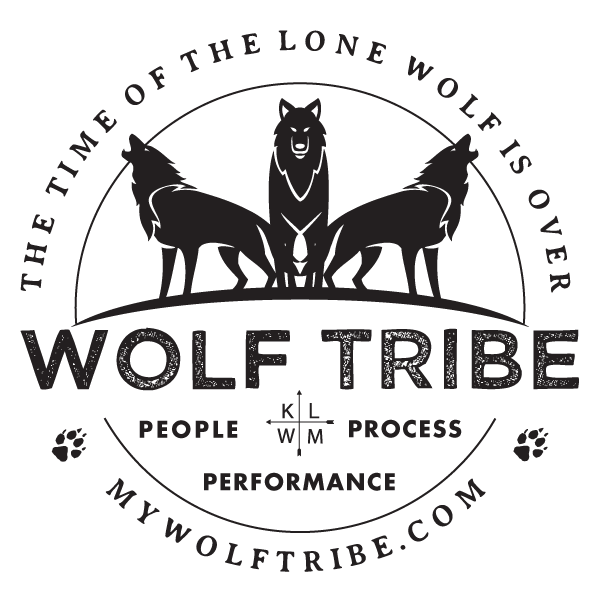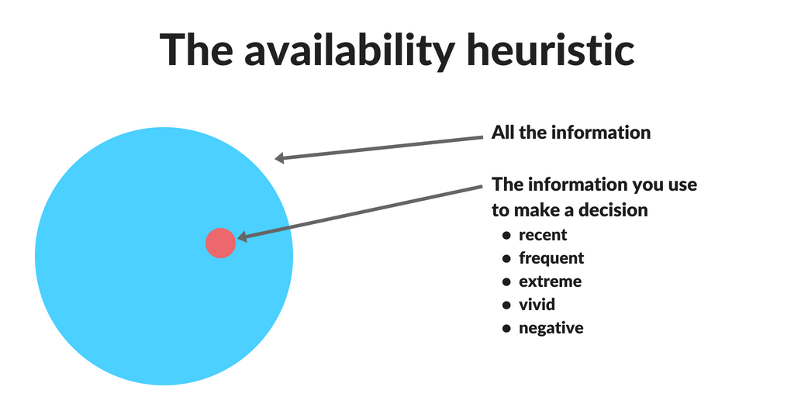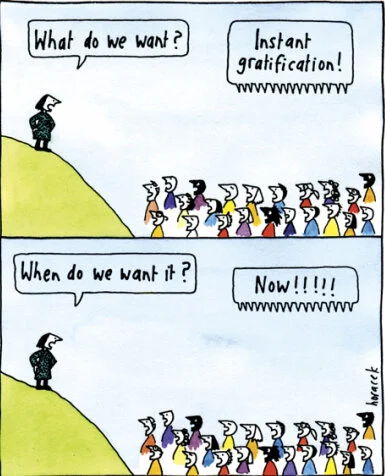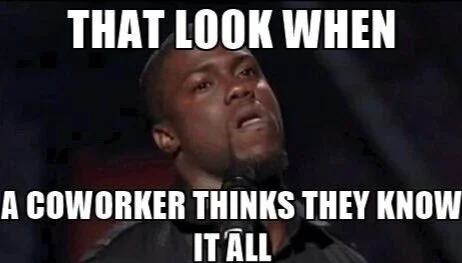Company Culture & Growth: How To Make Better Decisions
Cognitive biases present one of the most significant obstacles we modern humans face, and you may not even know it. These mental shortcuts, also called heuristics, are a product of evolution that allow us to increase our mental efficiency by making quick unconscious decisions with little cognitive effort from us. They ensure swift navigation through the estimated 35,000 conscious decisions we make each day, leaving extra “bandwidth” for our more complex choices. Unfortunately, they can often lead us to poor conclusions. But there is hope - if we can acknowledge and understand these biases, we can outsmart our own minds to make better decisions for ourselves, and for our organizations.
Culture is formed by the collective decisions and norms of a group. We are each responsible for our culture, and we have the power to shape our organizations with intentionality. Yes, certain people carry more influence over our culture, but that doesn’t mean individual contributions go unnoticed. By acknowledging our blind spots and by helping our organizations recognize these human fallacies, we can help develop a company culture that makes decisions and sets norms with intentionality - cultivating a culture that is less blind. With each decision we make, we can create a culture of higher performance.
Here are five cognitive biases to acknowledge and outsmart. Please read this with an open mind. To recognize our unconscious habits may be uncomfortable, but it is the first step towards a more genuine, constructive, and intentional company culture.
BIAS #1 - Availability Heuristic
Availability is a heuristic whereby people make judgments about the likelihood of an event based on how easily an example, instance, or case comes to mind. - Thinking, Fast and Slow, Daniel Kahneman
We make decisions based on the information we can quickly recall. To make the best possible choices, we’ve got to equip ourselves with a wide variety of data to draw on at each decision point. At your company, if a single perspective is your pipeline for information, that single perspective rules. Your brain becomes wired to believe that information without question while also becoming increasingly wary of statements that contradict those ideas. So what does this look like? Let’s pretend that you are the VP of Sales at your organization. The CEO asks you, “in your opinion, which department has worked the hardest this year?” You can probably see where this is going. It is highly probable that you as the VP of Sales will say your own department. While there are political motivations for saying so, you will probably believe that your department has worked the hardest because you have seen just how much time and energy they have put in this year. Accordingly, the VP of Operations probably has a different answer to this question. These assumptions can lead to a stalemate between departments and can crush employee morale.
The Fix:
Understand that we typically make decisions with limited information, which leads to poor decision-making. Nobody is immune.
Set aside time in your meetings, create a step in your process, and block time in your calendar to gather and listen to new perspectives and information.
Regularly incorporate someone with a different point of view. A person from another department will have other incentives, a person from a different background will have different perspectives, and a person who doesn’t look like you will have a different set of experiences. If this isn’t possible, have someone play “devil’s advocate”, and take it seriously.
Engage in interdisciplinary conversations, projects, and teams.
Encourage a culture that is comfortable - a culture that encourages the expression of different perspectives. When was the last time you stopped and sought out more information?
Systematically make more information available.
BIAS #2 - Hyperbolic Discounting
Hyperbolic Discounting refers to the tendency of people to increasingly choose a smaller-sooner reward over a larger-later reward. To better understand this phenomenon, answer this. Choose either Option 1 or Option 2. Option 1 – You receive $50 today. Option 2 – You receive $100 two years from now. What did you pick? Now think about this new set of options. Option 1 – You receive $50 today. Option 2 – You receive $100 tomorrow. Does your answer change? If it does, you are in the majority.
Even when we take into consideration the time value of money and account for a “wise investment” of the $50 (that most of us chose in the first set of options), the $100 in two years is more logical from a financial perspective. But we often choose the $50 today over the $100 in two years. We do this because we value instant gratification and find it hard to effectively weigh the pros and cons of a decision that involves the distant future. But in order for our organizations to thrive, we’ve got to fight this desire and this bias in our decision-making. Our effectiveness, and more specifically, our impact, is directly tied to the commitments we make and our ability to follow through with those commitments. If we fail to accurately balance our short and long term objectives, research shows that we will end up with a culture of distrust, low engagement, and poor performance.
Hyperbolic discounting has been applied to a wide range of phenomena ranging from lapses in willpower, health outcomes, consumption choices over time, and personal finance decisions. – Behavoirlab.org
The Fix:
Create a culture of accountability and feedback by integrating check-ins into your processes.
Ask for people’s thoughts on your decisions and commitments and have them reflect your decisions making back to you. Oftentimes the people that surround you will be able to help you more accurately weigh the future situation.
Break the end result or goal into smaller, more frequent successes. By creating sources of instant gratification, you are more likely to make decisions that will benefit you in the long run.
Commit in a public capacity. We are more likely to hold ourselves accountable if others are relying on us and know of our intentions.
Consciously address the long-term vs short-term tension clouded by hyperbolic discounting in each of our strategic decisions.
Be realistic about your future capacity. How often do we say “I will get around to that tomorrow” or “That’s great, I can do that, but not right now” and not get around to it. What future duties or feelings might you be discounting?
Bring in reinforcements, utilize your colleagues
BIAS #3 - Hindsight Bias
The tendency, upon learning an outcome of an event—such as an experiment, a sporting event, a military decision, or a political election—to overestimate one’s ability to have foreseen the outcome. It is colloquially known as the “I knew it all along phenomenon.” -Britannica
At the surface this may not seem harmful, but in reality, hindsight bias has significant ramifications on our organizations and on our culture. Picture this, you are back in your office for the first time and express that you didn’t expect such a massive disruption from COVID-19. A coworker chimes in and says, “I knew that it was going to be this disruptive”, the very same coworker who at the beginning of this pandemic believed it to be a “hoax”. There are two pieces of this situation that make it crippling for your organization: culture and performance. First is the gut reaction that some of you probably felt when reading this. The feeling of hypocrisy. We have all had this encounter, and it doesn’t feel good. Not only does it make us dislike that person (research suggests that liking is an important factor of productivity in any organization), but we begin to distrust that person, a significant indicator of an unhealthy culture and poor performance. Now, let’s see the scene from the coworker’s perspective.
With these statements, our coworker has actually begun to rewrite history and distort their memories so that they were in fact correct all along. As this happens over multiple instances, this coworker develops overconfidence in their decisions, which costs companies billions of dollars in assets and time each year. This may seem extreme, but the reality is that our memories are not all that accurate, and that ends up hurting our organizations.
The Fix:
Keep track of the data and information that led you to your decisions and record your thinking. Look back at this after the results are in.
Admit when you misperceived a situation and made the wrong judgement call. Show that you have learned from your mistakes. People will respect you for leading with integrity and you will make better decisions in the future.
Make large decisions using a framework and clearly commit to an outcome. Have you ever revisited large decisions?
Nobody likes to hear “I knew it all along”
BIAS #4 - Confirmation Bias
The tendency to search for or interpret information in a way that confirms one’s preconceptions, leading to statistical errors. -Science Daily
When we have come to a conclusion, we tend to seek out information that confirms our pre-existing beliefs. This shows up when you only ask someone's opinion when you have a general sense that they will agree with you, when you only seek information from certain sources, and when you tune out information that you disagree with. In a business environment that is more susceptible to disruption than ever before, confirming your current beliefs can be detrimental to our organizations. This thinking leads to stagnation, loss of innovation, and creates groupthink.
This may sound similar to the availability bias, but there is a key difference. The confirmation bias is what stops us from hearing certain types of information, while the availability bias leads us to conclusions based upon our limited information. However, the way in which you can outsmart this bias is very similar to what you can do to fight the availability bias.
The Fix:
Try and be neutral. Ask neutral questions and interpret the data as objectively as possible.
Acknowledge the gray area in decisions, admit that each choice comes with a unique set of pros and cons. Try to see the perspective of the alternate decision.
Create a process in which each person or team alternates on speaking on a new topic first. Ensure that each viewpoint is heard and the strengths and weaknesses are clear. This can lead to a compromised solution that maximizes benefits and minimizes losses.
How often do you stop, take a moment to think about a decision, and decide to seek out a different perspective?
BIAS #5 - Fundamental Attribution
Error
It refers to an individual’s tendency to attribute another’s action to their character or personality, while attributing their own behavior to external situational factors outside of their control. - Harvard Business School
Imagine yourself meeting with a vendor or interviewing a job applicant. They were supposed to be in your personal chat room 10 minutes ago. How are you feeling? How do you perceive this person and what assumptions are you making? Studies show that you are probably making assumptions about that person's character, work ethic, and other traits. Let’s flip the scenario. Think about a time when you were running 10 minutes late to an event or meeting. You probably had a “justifiable reason” and it likely had nothing to do with your work ethic or reliability. Yet we typically make those assumptions about someone else unconsciously. Even if that person shows up to your virtual meeting with a good reason for being late, damage has been done. We have already made decisions about that person's character, texted our coworkers, and possibly made decisions on whether or not we will want to work with them. As you can imagine, these assumptions can have a huge impact on our organizations. From promoting a culture of fear to undermining the successes of others, this bias is harmful. The key here is that we can intentionally change our actions to override the unintentional consequences of this bias.
The Fix:
Work on your EQ (Emotional Intelligence). This involves self-regulation and empathy - both can be taught and learned.
Don’t take other peoples actions personally, instead understand that they almost always have no intent of offending or hurting you.
Create a culture that makes conclusions based on evidence and not assumptions, particularly when it comes to people’s actions.
What have you done to work on your EQ?
EQ is just as important as IQ
Understanding these biases and taking action against them will lead to a higher performing culture. For most of us, this will be no easy task. But that makes it all the more important. As you begin your conscious effort of fighting these biases, remember that it is human to have them. It is normal and it is not your fault. We all have these biases, but it is up to you to not let them cloud your decisions.
If you found this helpful and want to learn more, there are countless more cognitive biases to outsmart. A few that might interest you are Negativity Bias, the Overconfidence Effect, and the Sunk Cost Fallacy. Below is also a link to a great short article on how to overcome cognitive biases in general. You can look them up, or reach out to me if you have questions! Feel free to share and comment so that more people can learn from this.
https://hbr.org/2015/05/outsmart-your-own-biases
Cole Christie
Cole’s mission is to enhance the lives of those around him by connecting people with opportunities. As a consultant and advisor, Cole has worked with startups, Fortune 500’s, and nonprofits to create sustainable growth through their people strategies. Some of his notable experiences have been his Fulbright grant in Malaysia, volunteering in the Himalayas, researching the impact of gratitude at USC, and working with veterans in Wolf Tribe. He can be reached via LinkedIn.







